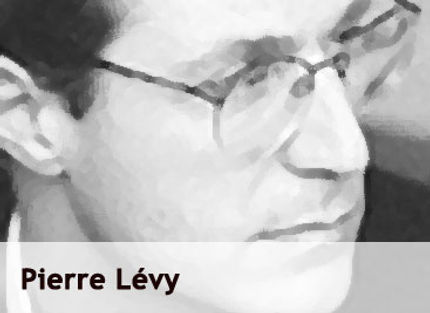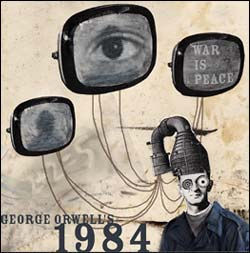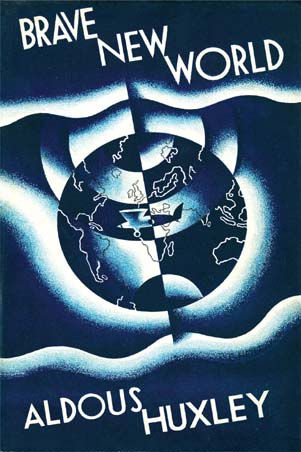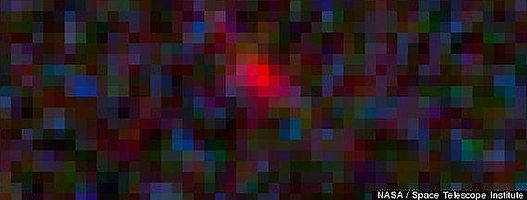ART AND NEW TECHNOLOGIES
New media shape a type of knowledge. A new culture that is appreciated in environments like those of education and art, characterized by being immersive, participative, and being within everyone's reach.
The popularization phenomenon of digital creation, despite being very recent, presents signs of the immense possibilities for the future that these artistic expressions have, the fruits of a globalized and connected world, created in a space that is practically unlimited and boundary-less.
Virtual scenery modifies our version of reality and discovers a universe generated by new technological media. The presentation of different artistic and cultural modalities that have arisen and the possibilities that they can develop into in the future, about virtual worlds and their creations, form the nucleus of the Metaverse project.
ART

The different exhibits and activities include a historic journey of art and new technologies; they show the development and evolution of synthetic worlds, and they present artistic creations of multimedia artists of international renown. They develop cultural themes about current situations and innovation projects and research that will apply in the future.
The digital works of the project are shown by means of artists that utilize art and new technologies in the sphere of the real world, in the virtual world, and the producers that are expressed in the environments of the generated world. Different cultural activities have been studied with interaction from professionals and on-site and in network public audiences, allowing access to the immersive experience in person.
The configuration of a new virtual space has been made possible with support from ifferent knowledge areas and sources. The creative precedents are of all types and include fields of philosophic, metaphysical, astronomical, mathematical, literary, pop culture, comics, and cinematographic character.
Metaverse is a global project being done by OPEN THIS END (OTE) about current artistic and cultural creations with new media. OTE is a not-for-profit cultural organization started by professionals in the worlds of art, culture, science, and education, which researches, classifies, develops and exhibits content generated with new technologies.
The Metaverse project was born with a study done by Cristina Garcia-Lasuen about the relationship between today's art and new possibilities for creation, whose first presentation phase ended in December 2008. The product of this first analysis was shown daily for six months at the World Expo Shanghai 2010 (May 1-October 31).
OTE was in charge of the audiovisual content in the pavilion at the Universal Expo in Madrid. Internationally award-winning, it exhibited a different program every day of the exposition schedule: Open This End, Signs of Contemporariness, Cinemapop. It was a highlight, according to media outlets like ArtPulse and Today is Art, among others, since it was the first time that the triple classification of current video art was shown and the first time that the machinimas were on display as a new artistic manifestation in a universal context, reaching a total audience of 4 million visitors.




The Metaverse project is a global program comprised of various expositions and cultural activities, conferences, workshops, displays, events, diffusion media and websites that analyze the relationship between current knowledge and new technologies. It develops a program of innovation and research centered on art, culture, and the most current in education. It anticipates the distinct possibilities of the spaces made by computer in 3D, called virtual, digital, generated, synthetic or metaverse worlds.
This universe appears for the first time in the novel “Snow Crash” (1992) by Neal Stephenson, where he describes an immersive environment in cyberspace, called the metaverse. Stephenson writes about a place located in a different dimension from real-life that is inhabited by Avatars, iconic representations of the users, which are the inhabitants of this unreal, intangible virtual space, but that is also not just a world of drawings.
Like other science fiction writers before him, Stephenson was ahead of his time. Snow Crash was written before it could be put into practice in cyberspace.
To carry out the displays about different environments and the distinct virtual worlds, we have conceived numerous activities, according to the degree of experience and subject matter knowledge.
These activities are presented in two formats:
-The Master area done by artists and experts in generated worlds and
-The Pop area created by students and the public.
In each area, complementary activities are developed for the temporary exhibits, like classes, conferences, workshops, meetings, interviews, forums, round tables, and others, like concerts and live cultural events, and more onsite activities like those online that complete the perception and comprehension of the metaverse worlds and art with the most current new technologies.
Levy contributes to developing notions like cyber-culture, cyber-democracy and the collective in-network intelligence understood as “the capacity of the virtual communities to stimulate the combined expertise of its members.” He makes innovative conclusions about societies based on knowledge, demonstrating the efficiency of shared knowledge systems and opening arguments that allow for the development and realization a new feeling about the reality that is indefinite. Virtual Reality.
In the creation and the development of new imagery, like the metaverse worlds, the contribution of the philosopher Pierre Levy is on the ball. It widens and develops the philosophic theories pointed out by Gilles Deleuze about the conception of the virtual as a dimension of that that is real; incorporating new aspects about the rhizome thought—through fusion and convergence of digital networks--, cyberspace, hypertext communication, hypertext, and new communication means, that bring the web forward. Jean Baudrillard develops the concept of simulation opposite reality.


The sensation of being in a new space is intensified by allowing ourselves to interact in a natural way with the objects and characters in the virtual world, creating situations and scenes that can be lived, photographed, and recorded live by a new audiovisual and cinematographic creation tool called machinima.

Mimesis Monday & Selavy Oh project TRANSIT’T, which consists of three parts: silence, breathe, and personality. That one is part 2: silence. silence - or Taciturnly, as mimesis calls it. Images by Honour McMillan's.

Mimesis Monday & Selavy Oh project TRANSIT’T, which consists of three parts: silence, breathe, and personality. That one is part 2: silence. silence - or Taciturnly, as mimesis calls it. Images by Honour McMillan's.


Mimesis Monday & Selavy Oh project TRANSIT’T, which consists of three parts: silence, breathe, and personality. That one is part 2: silence. silence - or Taciturnly, as mimesis calls it. Images by Honour McMillan's.




The word metaverse, at the margin of its narrative function, literally can be translated as something beyond words. The term has been generalized to mean the comparison of simulated realities done in network.
Immersion into the virtual world is done immediately because we are introduced into it in tridimensional shapes that exist previously. That is, the space has volume and casts shadows.
Within this synthetic world, new artistic creations can be made. The digital volume, although it is not material or tangible, is not just a simple visual impression. Everything that exists in virtual worlds had volume, occupies a place, and is sculpted, one by one, by artists or, in some cases, by fans. On the other hand, since figures that are made that don't have to be subjected to earthly physical limits, like the law of gravity, surrealist and fantastic objectives and structures that are impossible to find in real life can be made.
The exhibits are presented in accordance with the three levels of virtuality described by Cristina Garcia-Lasuen, (following Levy's philosophical approach about that which is virtual), Real, Virtual, and Metaverse, and in 2 intensities, Master & Pop, depending on depth and knowledge of the subject.


"Do Androids Dream with electric sheep?"(1968) Philip Kindred Dick


“Structures- Or Why Things Don’t Fall Down” J.E. Gordon

"2001 A space odyssey" by Arthur C. Clarke


"The Hitchhiker's Guide to the Galaxy" a trilogy by Douglas Adams (with the sixth written by Eoin Colfer) (1979)


Starship Troopers by Robert A. Heinlein (1959)

"The Stars My Destination" (1956) Alfred Bester




Dreamweaver's Dilemma by Lois McMaster Bujold (1995)


The Foundation Trilogy: Foundation, Foundation and Empire, and Second Foundation. The Foundation series is a science fiction book series by Isaac Asimov with 7 volumes in universe chronological order: Prelude to Foundation, Forward the Foundation, Foundation, Foundation and Empire, Second Foundation, Foundation's Edge and Foundation and Earth.


Some novels, especially those pertaining to the “science fiction” genre, like cyberpunk, steampunk, and some others, have created narrative scenarios that have contributed to the formation of a new imagery that is carried out in the metaverse worlds.
METAVERSO
SOURCESSOURCES
MASTER & POP
CULTURE
PHILOSOPHY
LITERATURE


Theories about multiverses suggest the existence of various parallel universes, the proposal done in 1950 by physicist Huge Everett being one of the highlights. These theories study the possible existence of “different worlds” in the universe in which, according to what Everett explained, every time that a new physical possibility exists or is explored, the universe is divided into multiple possibilities. As such, given the number of possible alternatives, it would be possible for each one of them to be implemented in their own universe.
SCIENCE
E X P L A N A T O R Y E L E M E N T S O F T H E M E T A V E R S E
At first, the Metaverse exhibits show elements and concepts that correspond to:
*Art *Activities, Cultural shows, Means of communication, and Performances *Cinemapop
ART
Art, Architecture, and Design. 2D and 3D. Static Art. Environments. Dynamic Art. Kinetic Art. Reactive Art. Interactive Art. Immersive Art. Mimetic Art. Photography, Digital Paintings, Tridimensional Art, Designers, Scripters, Environmental Art, Art Shows, Architecture, Nature and Countrysides. Environments. Happenings and Performances. Architecture and Design. Landscapes. Videos. Projections. Immersive areas. Installations, Programmers, Design, Buildings, Structures, Environments.
C U L T U R A L E V E N T S, M E D I A A N D A R T E V E N T S
Cultural Events, Museums, Art Galleries, Theater, Ballet, Entertainment, Musicals, Social Events, Avatar Designs, High Design Shows, Live Music, Concerts, Dance Performances, Sports, Activities and Pastimes, Entertainment, Science and Technology, Means of Communication: Digital TV Programs, Live TV, Radio, Digital Magazines, Press; Cultural and Educational, Tours and Games. Social Events, High Design Shows, and Pastimes.
CINEMAPOP
The new media for cinematographic creation. Exposition of machinimas and immersive videos.
C O M P L E M E N T A R Y A C T I V I T I E S
With these exhibits, thematic content will be able to be developed about different themes related to the displays and additional cultural activities about digital art, new films, video games, metaverse worlds, among others.
-Classes
-Conferences
-Interviews
-Talks, round tables
-Art workshops
"When the computer crashed and wrote gibberish into the bit map, the result was something that looked vaguely like static on a broken television set, a “snow crash.” (Neal Stephenson “Snow Crash” 1992).
“The sun over the port had the color of a television, tuned to a dead channel” (William Gibson “Neuromancer” 1984)
INTRODUCTION
“Metaverse worlds are generated digital environments that reproduce tridimensional universes in cyberspace. Inside the metaverse, the user adopts a new identity with a digital character that allows them to interact in the virtual space, with digital objects and with other users in the shape of icons, alter-egos, called “avatars.” Synthetic universes are created through logical support, with a digital or electronic signal, which lacks earthly limitations and that, like Castronova says, are corporeal, interactive, and persistent. The metaverse is, in short, an immaterial world that relates aspects and lexicons of the oldest civilizations with the binary language used in the current culture of computer programming. The generated worlds will develop a new imagery; they configure a new virtual reality and they act as metaphors for the real word.” (Cristina Garcia-Lasuen).
Images from the atmosphere and performance Transit't-Silence-Taciturnly of Selavy Oh and Mimesis Monday (April, 2014). Interpretation of the metaverse from the two artists in transit situations. Concept: Silence-Reflection/Pensive (taciturn). The conceptual immersive artists utilize the possibilities of the metaverse world to develop and give shape to new theoretic and artistic meanings.
Ridley Scott's “Blade Runner” (1982), a movie based on the cyberpunk novel by Philip Kindred Dick. “Do androids dream about electric sheep? (1968)” Image of the final soliloquy—tears in the rain—from the replicant Roy Batty, based on verses from the poem “The Drunken Boat” by Arthur Rimbaud: “I have seen things you people would not believe. Attack ships on fire off the shoulder of Orion. I watched C-beams glitter in the dark near the Tannhauser Gate. All those moments will be lost in time like tears in rain.”
Metaverso by Open This End
Metaverso by OPEN THIS END
"Push" machinima film by Lainy Voom




